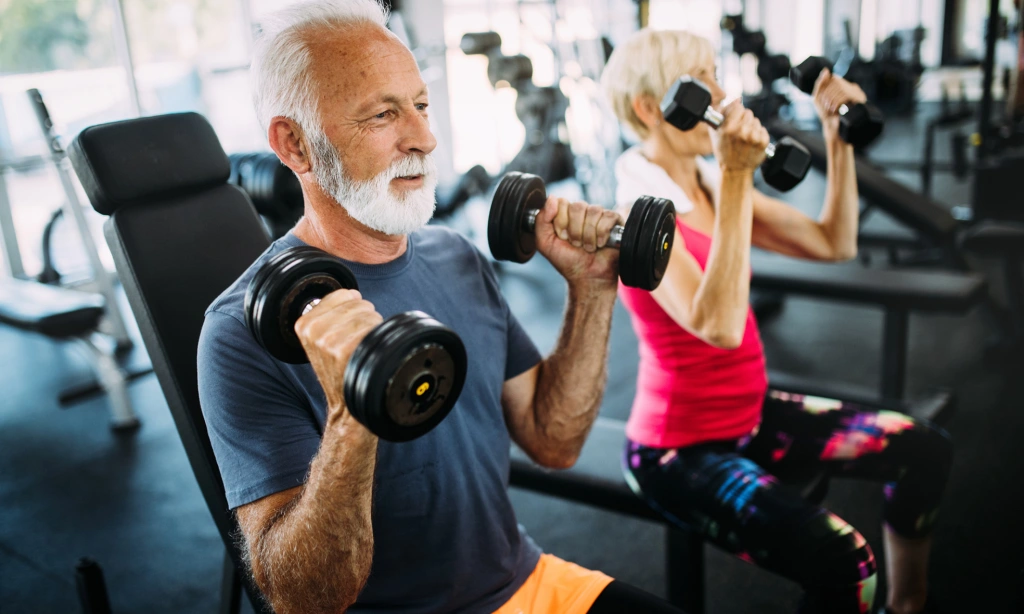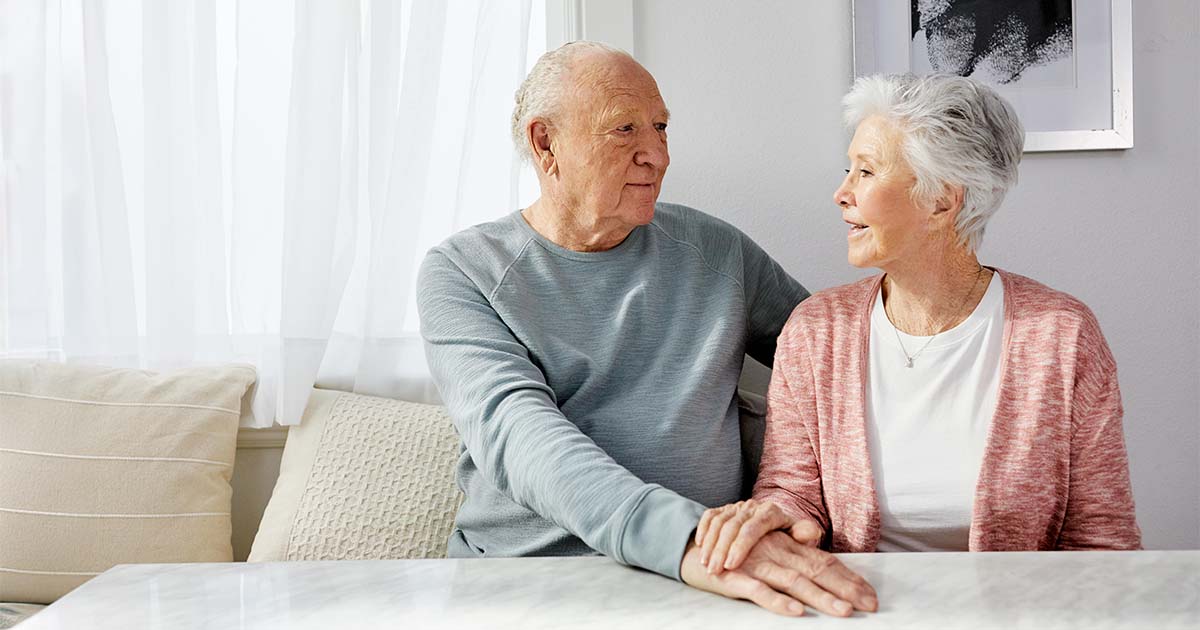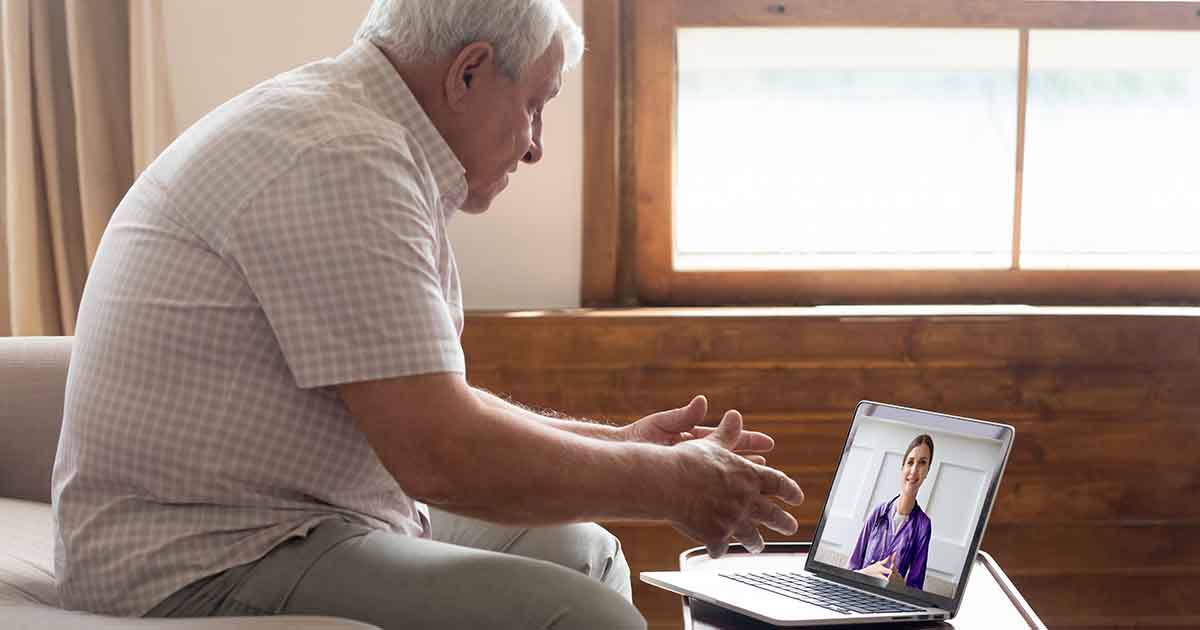Loss of mobility is a common challenge that occurs as we age. Trouble moving or walking can make activities of daily living difficult to perform and at times lead to a loss of independence. However, it’s important to keep in mind that exercise can benefit older adults.
While many may assume that exercising with poor mobility can result in increased risk or injury, it actually has significant impacts on improving mobility, balance and overall well-being — even for older adults living with arthritis, back pain or osteoporosis.
Before starting any exercise routine, it is always important to check with your physician to determine which exercises would be safe and most beneficial for you. Learn how different types of exercise can benefit older adults and help you regain mobility and independence.
Aerobic exercise
Cardio or aerobic exercises can be great for improving heart health for people who have heart disease and high blood pressure. They can also help lessen your risk for developing heart disease or slow the progression of heart disease.
Aerobic exercise can benefit older adults by helping to keep muscles strong. This assists with maintaining mobility, reducing the risk of falls and keeping your mind sharp.
The CDC recommends 150 minutes of moderate-intensity aerobic activity per week for older adults who don’t have any limiting health conditions. For those with existing health conditions, it’s important to talk to your physician about which aerobic activities are best for you.
Pickleball
Pickleball is a great example of a low-impact aerobic exercise, and it is one of the fastest-growing sports in the U.S., according to the Sports and Fitness Industry Association (SFIA). Although it is similar to tennis in nature, it is played on a smaller court, requiring less running and jumping. This reduces the risk of injury, especially for older adults who may have a higher risk of falling or pulling a muscle.
Pickleball is a good choice for older adults looking to incorporate fun, easy exercise into their routine. It can help strengthen muscles, increase flexibility, improve balance and help with endurance and cardiovascular health. It also gives older adults a reason to get out and socialize as they can connect with other friends or family who enjoy the sport as well.
How to play pickleball
To play pickleball, you’ll need the following equipment:
- A flat paddle designed for the sport, that isn’t longer than 17 inches
- A flat ball designed for the sport, with perforated holes similar to a whiffle ball
- A 22-foot-long net that sits 34 inches tall
- A court that is about 44 feet long and 20 feet wide
You can find pickleball kits that contain all of the above equipment online or at most retail or sporting goods stores.
The general game format of pickleball is:
- One player serves the ball underhand
- The ball is hit back and forth over the net until one player misses their shot
- Points are only awarded to the serving team
- Each game goes to 11 points and you must win by two points
You can choose to play pickleball one-on-one or two-on-two, with rules slightly changing depending on the number of players. For the official rules on how to play pickleball, you can visit USA Pickleball’s official rulebook here.
Strength training
Strength training and strength types of exercise can benefit older adults in many ways and make a big impact on their overall quality of life. They do so by gently stressing the bones, which eventually leads to increased bone density. This helps reduce the risk of developing osteoporosis and fractures that can occur due to a loss of bone density as we age.
Most importantly, strength training can help older adults reduce the risk of falls. Strength training helps older adults build strong muscles, which in turn improves body mechanics and balance—all important components in reducing the risk of potential falls.
Flexibility
Exercises that promote flexibility can help older adults accomplish activities of daily living and maintain the physical activities they enjoy such as tennis or golf. Lengthening and stretching your muscles prevents injuries that could lead to back issues or balance problems while lowering the risk of future injuries.
However, it’s important to note that experts recommend stretching in the morning, after exercise and at night. But stretching before physical activity may actually increase your risk of injury.
Getting started with exercise as an older adult
Starting an exercise routine can be difficult but sticking to your physician’s recommendations can have significant impacts on your mobility.
Here are a few tips to help ease into your exercise routine as an older adult:
- Get medical clearance. Make sure to get your physician’s approval before starting any exercise routine to avoid potential complications or unnecessary injuries.
- Assess what you can and cannot do. Start slowly and don’t be too hard yourself. Doing too much activity too soon can have negative impacts on your mobility.
- Have a fitness schedule. What days are you going to work out? What days will be your rest days? What exercises are you going to do? Planning ahead of time makes it easier for you to stick to it.
- Progress slowly. Gaining muscle and building endurance takes time. Be confident and consistent during the process.
- Monitor your progress. Tracking your progress can be a great motivator by reminding you how far you’ve come.
- Reward yourself. Take a bath. Treat yourself to new workout clothes or shoes when you hit your exercise goals.
Regular physical activity and exercise can benefit older adults and help them to live a healthier, more fulfilling life. By taking up an exercise routine, you’re lowering your risk of injury and the likelihood of developing chronic conditions while increasing your ability to maintain your independence.
Social Share
At Enhabit our patients are our number one priority. From providing the latest medical practices to building deep personal connections, we’re focused on upholding every patient’s dignity, humanity and sense of control on their health care journey.
Home health
Our home health services give patients access to the care they deserve in the comfort of their own homes. From disease and injury management to recovery from surgery, our clinicians help patients confidently achieve their health care goals.
Hospice care
Our hospice care services place importance on the comfort of every patient living with a terminal illness. Our caring professionals are dedicated to providing not just physical care, but spiritual and emotional support to every patient and their loved ones.

 Back to Resource library
Back to Resource library




